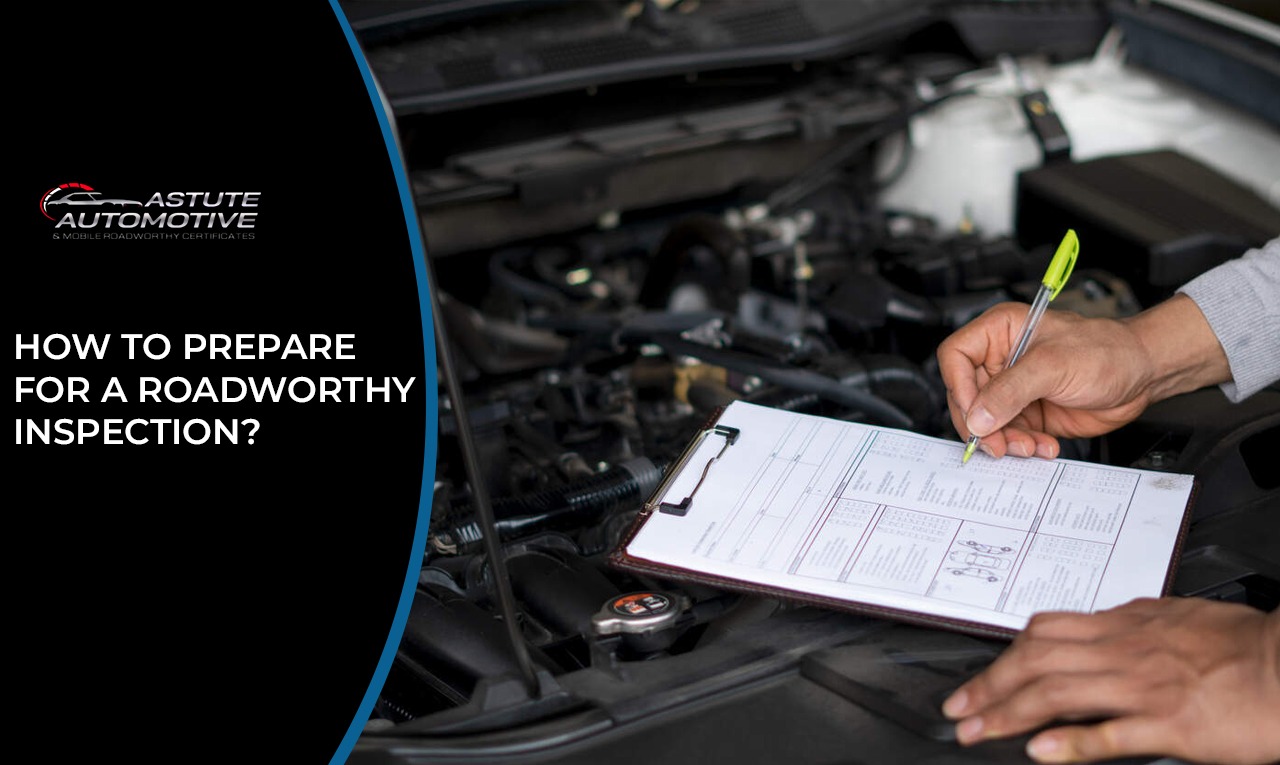
Always check that your car complies with all safety and regulatory standards before taking it for road inspection. Several simple checks and information on roadworthy certificate requirements can save you some dollars, prevent expensive repairs, and ensure a hassle-free inspection process. The guide outlines how to prepare for a roadworthy inspection and some of the essential checks you can do on your vehicle before taking it in for a roadworthy certificate (RWC).
Checking Your Lights
Among the roadworthy certificate checklist that the inspectors test in a roadworthy inspection is whether all the lights in your car are working. This roadworthy inspection preparation guide would remain incomplete without detailed information on this aspect. Check the lights in your vehicle as follows:
- Headlights: Confirm that both high and low beams can be on
- Brake Lights: Make sure that they light up whenever you tread on the brakes
- Indicators: Test the blinkers to confirm that they work and other people can see them.
- Dip or Fog Lights: Test them in the presence of fog. If so equipped, conduct the Reverse Lamp Test for the operation of reverse light.
In addition to checking the lights, ensure that the lenses are not cracked or broken. Broken lenses can lead to the penetration of inadequate light, which might make your journey less safe. The lenses should not be cracked or broken and should not cloud. They should ensure that your lights are working perfectly.
Check the Drive Shaft
The drive shaft underneath is the next check in how to prepare for a roadworthy inspection. This is the main component of energy transmission from the engine to the wheels. Ensure that it is not dented, broken, or loose. If one suspects it will fall out and show signs of heavy wear, a replacement before inspection is necessary.
Check the Handbrake
The handbrake or parking brake is one of the most critical safety features, as it keeps your car stationary if it is parked uphill or has remained stationary for some time. Pull up the handbrake and observe if it has a hold over the car and does not slip. If the handbrake is worn or faulty, it might fail the inspection, thus, checking it astutely while preparing your car for a mobile roadworthy is imperative. A handbrake that requires more than a soft pressure to prevent the vehicle from rolling has failed the inspection.
Check Your Tyres
One of the most important parts of any vehicle is its tyres, making its proper verification one of the most significant mobile roadworthy inspection tips. Worn-out or insecurely fastened tyres can be unsafe and fail your car at the roadworthy inspection. Here is what you should check:
- Tread Depth: The tyre should be at the correct level to grip the road. In most states, the tyre tread should reach a depth of at least 1.5mm, so always check your locale for local enforcement.
- Tyre Condition: Cracks, bulges, or cuts leave your tyre susceptible to damage.
- Secure Bolting: All your tyres should be bolted securely to the car. Loose bolts lead to accidents and certainly will fail an inspection.
Inspect for Rust
Rust can be hideous, but it's also a hazard in structural components of the vehicle, for example, in chassis rails, doors, or near windows. Rust leads to weakening the integrity of your car and becomes a serious hazard when it comes to car safety check before inspection. Before bringing the car in for its roadworthy inspection, ensure you scrutinize it for any rust in the following locations:
- Chassis Rails: Inspect any signs of rust along the structural rails down the bottom of the vehicle.
- Doors and Window Frames: These parts tend to rust quickly, especially on older cars or in wetter environments.
- Wheel Arches: Rust may start from here as well.
If you notice significant rust on any of the above, these should be addressed before any roadworthy is due and as per the solemn roadworthy inspection preparation guide.
Interior Condition
Assess the inside of your car and whether all parts fit tight together. Here are the general things to check:
- Panelling: All the panelling shall be securely attached and accessible from loose or broken parts.
- Centre Console: The centre console shall not have sharp edges that are a safety hazard.
- Seats and Seatbelts: Seats shall be securely fastened in place. Before inspection, any seats with seatbelts that do not retract properly or appear to be worn out shall be replaced.
Verify Oil Leaks
One major issue that may arise during a mobile roadworthy Brisbane checkup is oil leakage. Oil leakage does not help your car's engine and can also threaten other drivers who may encounter your spilt oil on the road. Examine underneath your vehicle for any signs of leaking oil, especially around your car's engine, gearbox, and differential.
If you observe a leak or drizzle of oil from any section of your car, repair the leak before presenting it to the inspection. Leaks with large quantities of oil will not pass in an inspector's view since they are hazardous thus; proper verification of the leaks is one of the most vital components of mobile roadworthy preparation tips.
Exterior Condition
In addition, the exterior condition of your vehicle, such as the dented parts, will influence whether you will pass the roadworthiness test and is an integral part of how to prepare for a roadworthy inspection. They will inspect whether the exterior has broken or sharp edges that may harm those passing by or other road users. Some of the essential vehicle inspection checklist for roadworthy on the exterior of your vehicle include the following:
- Doors: All doors must open and close smoothly without sticking or getting caught.
- Body Panels: There must be no broken or dented panels that could have sharp edges sticking out from the vehicle.
- Mirrors: The vehicle's mirrors must all be intact, correctly positioned, and free of cracks.
If a part of your car's outer body is broken or damaged, it is best to have it fixed before viewing the vehicle.
Why These Checks Are Important
This roadworthy inspection preparation guide will help you check whether your vehicle is in good shape and, hence, pass the roadworthy test. Adequate knowledge about what to check before a roadworthy inspection and common roadworthy inspection fails save you even more time and money by not having to bring it back again and again.
Preparing for a roadworthy inspection needn't be intimidating in the least. The mobile roadworthy inspection checklist: ensuring vehicle safety helps you in preparing in advance. Checking lights, drive shaft, handbrake, tyres, rust, interior condition, oil leaks, and exterior will give you a higher percentage chance of getting the inspection right the first time. These easy checks and strict adherence to how to prepare for a roadworthy inspection could save you money and make your car much healthier.
Remember, the result of a roadworthy test is that your vehicle needs to be safe enough for use- not for you, however, but for you and the people surrounding you. A well-crafted guideline on what to expect during a mobile roadworthy inspection will save you the shock and surprise.
OUR POST
- How Much Does A Roadworthy Cost QLD? Mobile Roadworthy Services Are Described!
- What Is A Roadworthy Certificate & All You Need To Know About It!
- What Is Checked In A Roadworthy Certificate QLD?
- When Do You Need A Roadworthy Certificate QLD?
- Selling A Car Without Roadworthy: What You Need To Know
- Gas Certificate Qld: How Long Does A Gas Certificate Last?
- What Happens If You Fail A Roadworthy? Let’s Know From The Experts
- How To Buy A Used Car – Top Tips And Tricks
- Mastering the Art of Car Washing: A Comprehensive Car Washing Guide for Beginners
- Mobile Roadworthy Inspection Checklist: Ensuring Vehicle Safety
- The Power of Mobile Safety Certificates: Ensuring Vehicle Safety
- What if my car does not pass a roadworthy inspection?
- Stop! You're Cleaning Your Car Headlights Wrong!
- How Long Does A Roadworthy Last – All You Need To Know
- How Long Do Car Tyres Last?
- How to choose the perfect mobile roadworthy service provider?
- The Importance of Mobile Roadworthy Services: Why You Need Them for Your Vehicle
- Understanding the Mobile Roadworthy Certificate Process: A Comprehensive Guide
- How To Winterize Your Car: A Comprehensive Guide to Cold-Weather Vehicle Maintenance
- Key Benefits of Mobile Roadworthy vs Traditional Roadworthy
- The Importance of Mobile Roadworthy Inspections
- Mobile Roadworthy Services: Navigating Brisbane's Roads with Confidence and Convenience
- The Critical Role of Vehicle Inspection Standards: Ensuring Safety and Smooth Rides
- How Long Does A Roadworthy Test Take?
- Free Rego Check: Peace of Mind Across Australia
- Mobile Roadworthy Questions & Answers
- 10 Everyday Roadworthy Inspection Failures In Queensland
- What Are The Uses of a Mobile Roadworthy Certificate?
- Pre Purchase Inspection Vs. Roadworthy Certificates
- What to Expect During a Mobile Roadworthy Inspection?
- Why Mobile Roadworthy Services Are a Time-Saving Solution
- How To Prepare For A Roadworthy Inspection?
- A Comprehensive Guide to Prepare Your Vehicle for Mobile Roadworthy Inspection
- Mobile Roadworthy Inspection Trends and A Look at the Future of Vehicle Safety
- Everything You Need to Know About Mobile Roadworthy Inspection Timeframes
- When to Book a Mobile Roadworthy Inspection in Brisbane?
- Step-by-Step Process to Secure Your Car Roadworthy Certificate in Brisbane
- How the Future of Mobile Roadworthy Services is Shaping the Tomorrow of Vehicle Inspections?
- How Often Should You Schedule a Mobile Roadworthy Inspection in Brisbane?
- Learn the Basics of a Mobile Roadworthy Inspection
- Top 5 Reasons to Choose a Mobile Roadworthy Certificate Service Over a Workshop
- Do You Need a Roadworthy Certificate to Sell a Car in Brisbane?
- What Happens After Roadworthy Certificate Expiry in Brisbane?
- Why Car Roadworthy Services in Brisbane Are Essential for Vehicle Owners?
- Why Choose a Mobile Roadworthy Over a Workshop?
- How to Get a Roadworthy Certificate Fast in Brisbane?
Copyright © 2021 Mobile Roadworthy Certificate Brisbane | Astute Automotive. All Rights Reserved. Powered by: iSquad.




